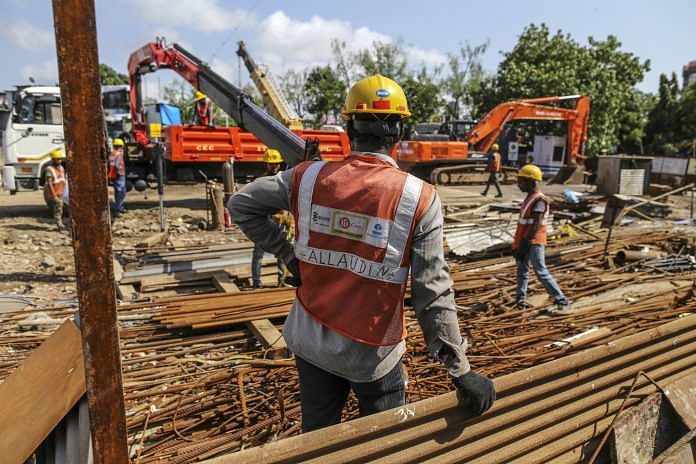Mumbai: Indian companies are pushing back big-ticket investment plans in another sharp blow to an economy that is hurtling toward its first contraction in more than four decades.
Billionaire Kumar Mangalam Birla’s Hindalco Industries Ltd. plans to cut capital expenditure by as much as 40% globally as the company plans to conserve cash, while Tata Steel Ltd., India’s biggest steelmaker, will see such spending drop to about half of last year’s level.
They are joined by cement and automakers in deferring spending plans in a sign that firms are increasingly bearish about Asia’s third-largest economy, which the International Monetary Fund estimates will shrink 4.5% this year, the first contraction since 1980.
With capital investments — both private and public — making up about a quarter of gross domestic product, lower expenditure could weigh on the economy in the long-term, including denting its potential growth rate of 7%-8%. Recent earnings have shown sluggish profitability at companies, as social distancing measures to contain the Covid-19 pandemic hit consumption, the backbone of the economy.
As a result, companies are preferring to sit on cash rather than investing and expanding capacities.
“The biggest hit to growth will come from investments,” said Kaushik Das, chief India economist at Deutsche Bank AG in Mumbai. “Many small businesses, particularly in the informal sector, may find it difficult to survive and those in the organized sector will likely see a collapse in profit due to the extended lockdown.”
That makes Das negative about the outlook for private sector investment, not just for the current fiscal year, but also the next.
Analysts at India Ratings & Research, the local affiliate of Fitch Ratings, see India Inc.’s capex plans shrinking 20%-26% in the financial year to March 2021 from a year ago. They see no meaningful recovery in private sector investment activity before 2025 in the absence of a “broad-based pick-up in domestic and external demand, faster resolution of stressed assets and deep structural reforms.”
Private sector investments were anemic even before the virus outbreak, as corporates stepped up loan repayments following a debt-induced expansion in the aftermath of the global financial crisis. When a slowdown followed, companies sought to de-leverage and repair their balance sheets. Several projects turned sour in the process, forcing banks to write-off loans and end up with one of the highest stressed-asset ratios in the world.
“The de-leveraging has taken longer than anticipated,” said Arindam Som, senior analyst at India Ratings. “While capacity utilization will take at least another four years to peak, broad-based de-leveraging will take another six to seven years.”
What Bloomberg’s Economists Say
“This year, we expect firms to focus on cash preservation and surviving the pandemic rather than risking valuable resources to chase an uncertain demand recovery. In addition, government’s decision to remain fiscally conservative, is further weakening the business sentiment.”
— Abhishek Gupta, India Economist
Where private investment is absent, governments usually make up for it by spending on infrastructure such as building roads, schools and hospitals. In India’s case, a plan to spend $1.5 trillion on infrastructure by 2025 is being constrained by falling public revenue and surging borrowing, requiring more private sector participation.
“The government has entered the pandemic with an elevated debt load, and is not able to expand much,” said Pranjul Bhandari, chief India economist at HSBC Holdings Plc, referring to the administration’s inability to step in.- Bloomberg
Also read: Inflation could surge to 12% if RBI starts printing money to fund govt, Rabobank says



